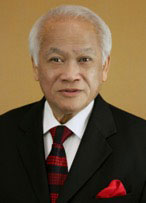On January 30, 2020, the World Health Organization (WHO) declared the outbreak of the coronavirus as a global health emergency.
The WHO's Emergency Committee is fully engaged in monitoring the evolving public health situation.
Both the Public Health Agency of Canada and the Centres for Disease Control in the United States are as involved on their own. The International Center for Infectious Diseases in Winnipeg made the laboratory confirmation on the first Canadian male patient from Ontario, which reported that his wife confirmed positive for the virus but without clinical manifestation of the disease.
The University of Saskatchewan's Vaccine and Infectious Disease Organization in Saskatoon has embarked to develop the appropriate vaccine.
The foregoing activities point to a common and collaborative effort on the part of the international health community to be prepared as this public health situation continues to evolve. This is reassuring to know.
I have summarized here what has been reported in the literature on this infection.
Infectious Germ: Named “2019-nCoV” for the novel (new strain) CoronaVirus identified in 2019, this is the first time this specific virus strain has been identified in human respiratory illness.
Transmission: The infection could spread from person to person following close contact with the infected source. This manner of transmission has been observed in China, likely also in Canada, but there has been no such report of spread in the United States.
Incubation Period: The appearance of signs and symptoms following exposure to a source varies from 2 to 14 days.
Signs and Symptoms: They manifest like flu, with the patients having fever, headache, runny nose, sore throat, cough, a general malaisel, and shortness of breath. Not all of the symptoms need be present at the same time and they vary from mild to severe, including pneumonia.
Diagnosis: A specific laboratory test for the virus is available in Canada and is needed to confirm the diagnosis when suspected by your physician. It is important to remember your recent travel history.
Treatment: While no specific treatment exists, medications are available to help control the symptoms and signs of the illness.
Prognosis or Outlook: Most patients will spontaneously recover on their own.
Geographic Spread in the World: The first outbreak with this respiratory coronavirus infection was recognized in Wuhan City in the Hubei Province of China. Thousands more have since been identified. In addition to China, Canada, and the USA, cases of this infection have been confirmed in the following countries: Australia, Cambodia, France, Hong Kong, Japan, Macau, Malaysia, Nepal, Singapore, Taiwan, Thailand, The Republic of Korea, and Vietnam.
Prevention: If you have the flu-like symptoms described above, you can prevent further spread of the infection (assuming the new virus is the cause of the symptomatology) by doing the following: 1. “stay home; 2. avoid close contact with others; 3. cover your mouth and nose with a tissue when you cough or sneeze; 4. discard the tissue in the trash; and 5. wash your hands for about 20 seconds.”
NOTE: When you or members of your family show signs and symptoms following close contact with a source or if there is relevant travel history, see your medical doctor for appropriate diagnosis and therapeutic management.



